The verdict: The 2017 Toyota Prius Prime is quirky in the driving department and overly expressive in the looks department, but its electric-only range, gas mileage and green-car mission are admirable.
Versus the competition: Other plug-ins offer similar fuel efficiency and electric-driving range, as well as more understated, regular-car styling, but the Prius Prime's value is hard to beat.
As many of us learn in playing (losing) the stock market, timing is everything. Toyota is likely in the middle of that lesson. New for 2017, the Prius Prime is a plug-in version of the regular Prius gas/electric hybrid, and now is not a prime time for it to debut: Sales of hybrids and electrics are down, and low gas prices and a White House teeming with climate-change deniers will likely keep them that way. That's a shame; the Prime delivers a solid fuel economy win — you just have to put up with some quirks in exchange.
The Prime goes up against other plug-in hybrids like the Kia Optima Plug-In, Chevrolet Volt and Ford C-Max Energi. Compare them here.
A Curious Blend of Strange and Efficient
It's instantly obvious the Prius Prime is no ordinary car; it wears its green-car brand like a Girl Scout badge of honor. For starters, its styling is other-worldly. The regular Prius' design has always been the most outgoing among hybrids, but the Prime takes that to galactic new levels. Many shapes and angles compete for attention, from the slicing headlights and steeply raked roofline to a wavy trunk lid and sweeping taillights.
It's odd and stands out against the Volt — whose styling was toned down for its current, second generation — as well as the uninspiring-looking C-Max Energi and the classy sedan looks of the Optima Plug-In.
It's also loud in strange ways. Powering up the Prius, you expect the silence of an electric car. Nope. First there's a creepy whir, then it gets louder than an ER during a full moon. The backup chime (which comes on inside the cabin when in Reverse) and the parking sensors' proximity beeps compete to steal your sanity.
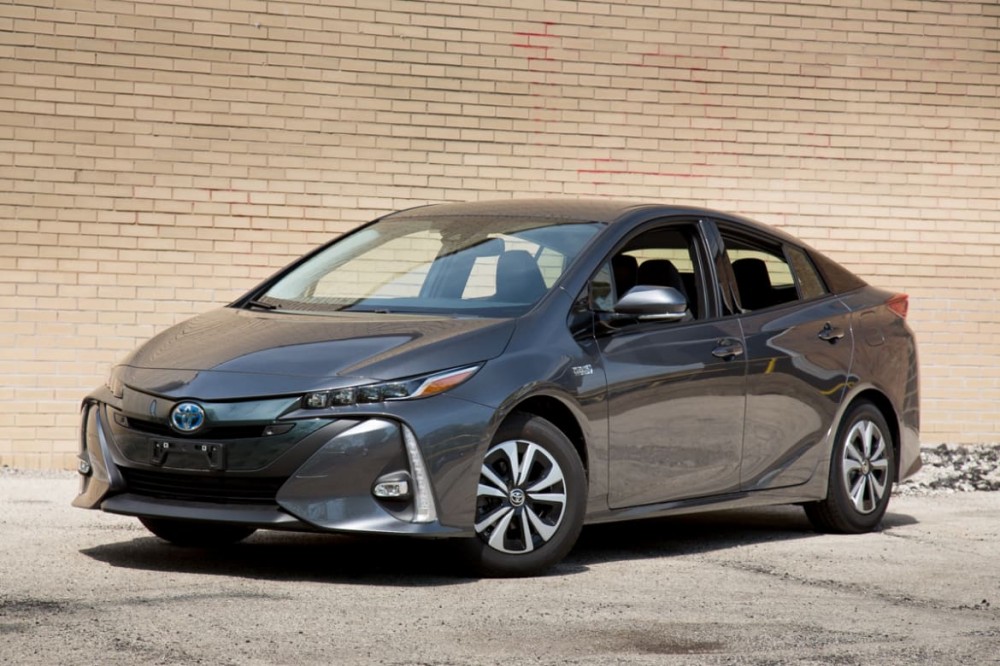
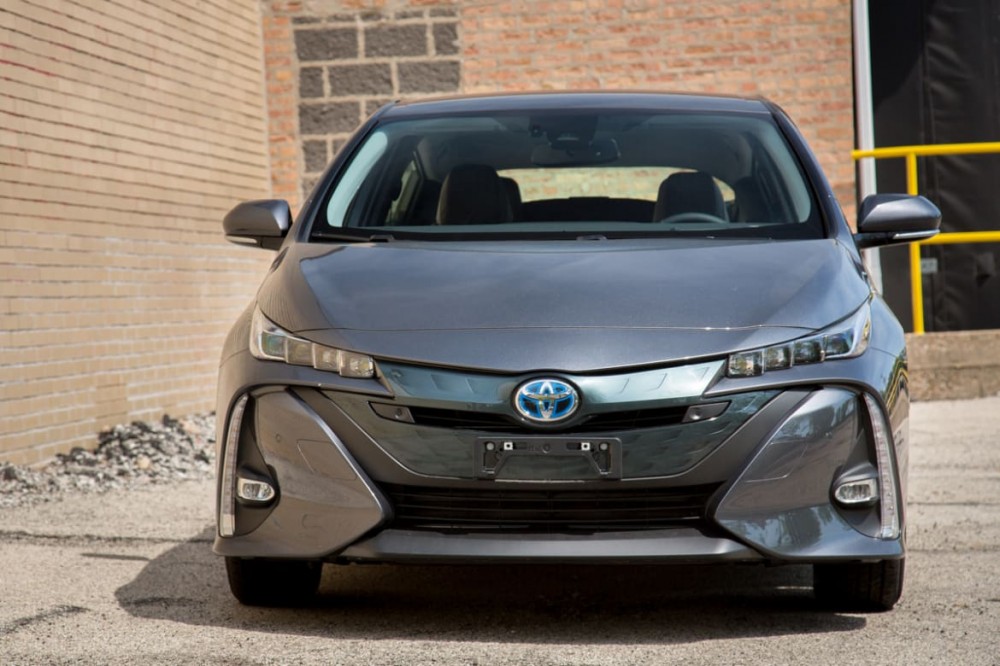
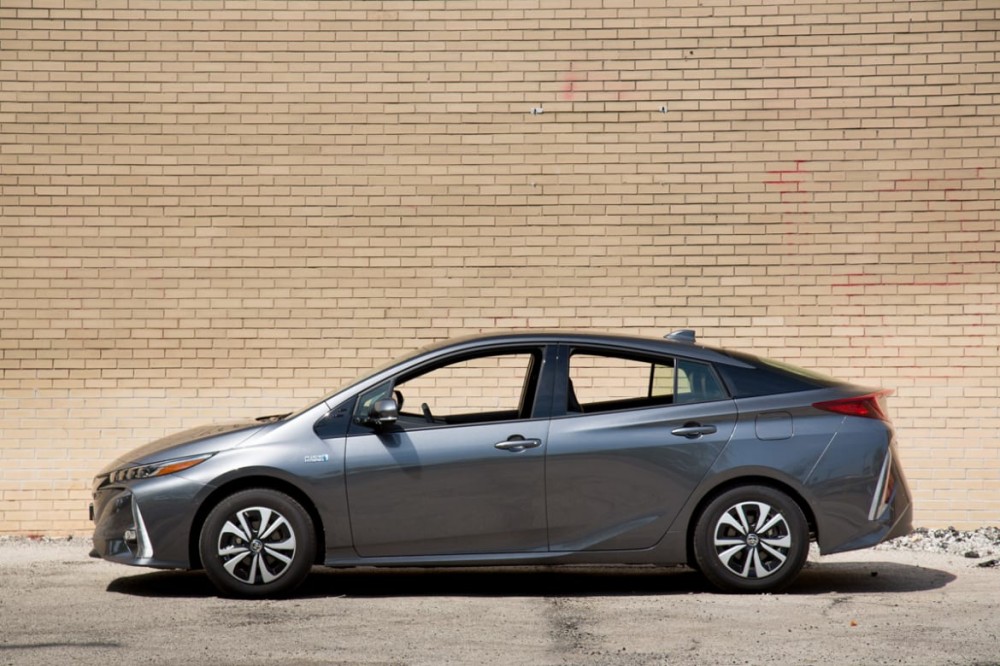
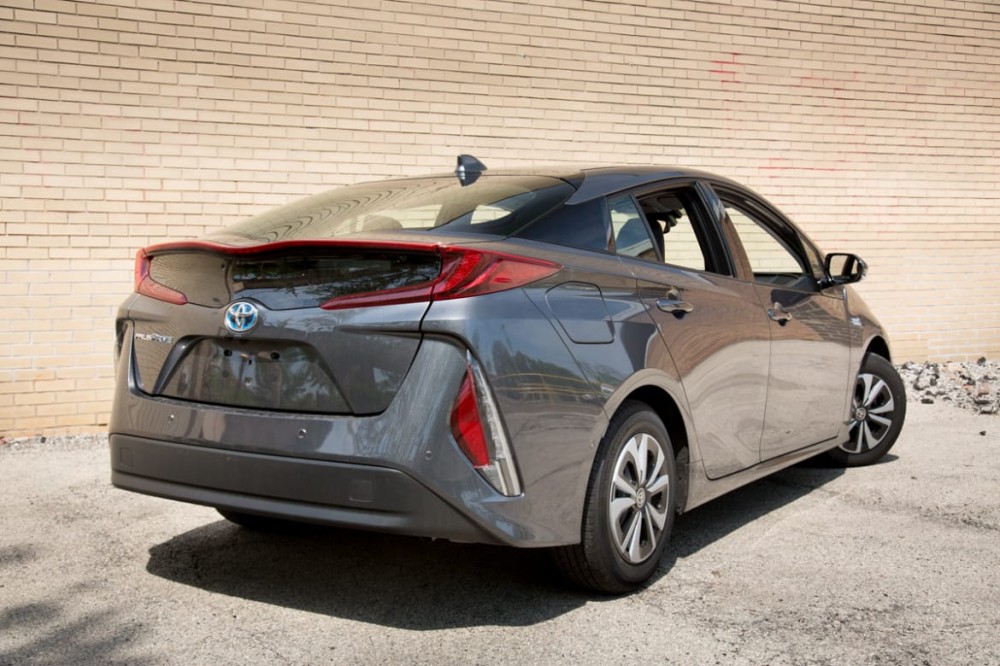
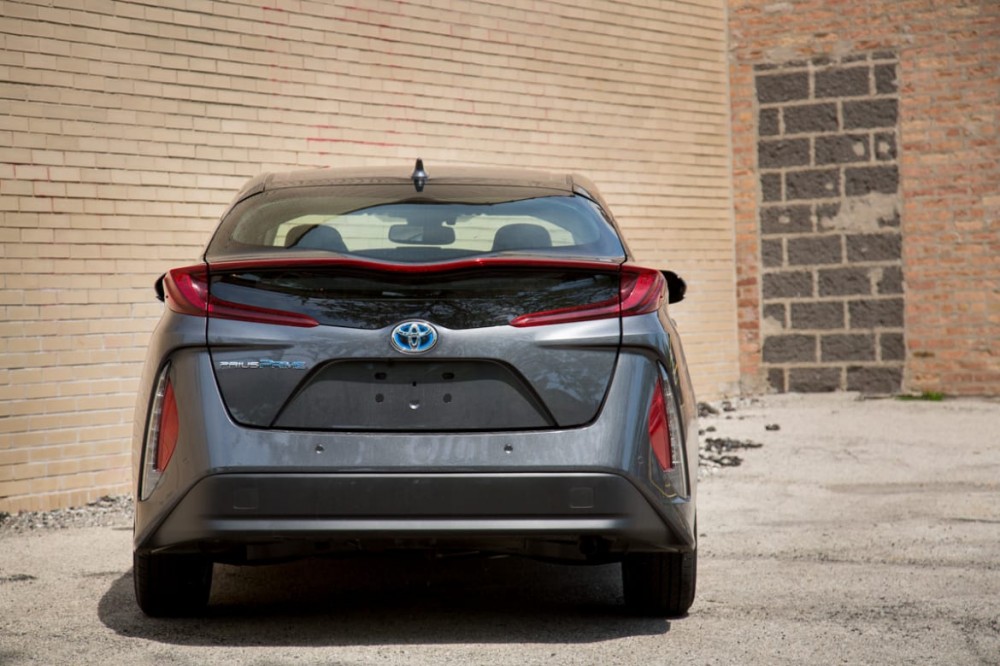
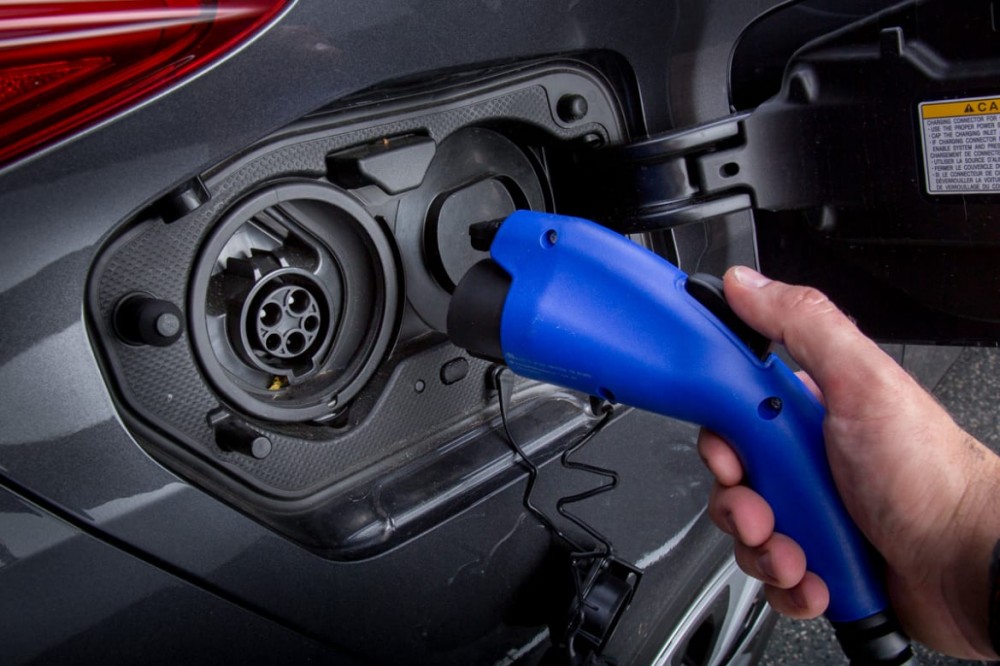
On the road, it feels a lot like a regular Prius, with a surprising amount of hustle off the line. A 1.8-liter four-cylinder engine combines with two electric motor-generators to produce 121 horsepower. The setup is borrowed from the regular Prius, but the Prime has a much bigger battery pack. Compare the models here. In EV mode, takeoffs are brisk thanks to near-instant torque. There seems to be less power with the gas engine on, but it doesn't feel slow.
Startup is louder than an ER during a full moon, and the backup chime and parking sensors' proximity beeps compete to steal your sanity.
The previous Prius Plug-In, last offered for 2015, was weak sauce, offering just 11 miles of electric range — and even that only if you kept the speed under 62 mph. The Prime has an EPA-estimated range of 25 miles, and Toyota says it can travel up to 84 mph in EV mode. A couple of editors found the estimated range is more than attainable. In fact, one editor was routinely able to go 30 miles in EV mode while driving normally. The battery doesn't like the heat, however; range slipped when the outside temperature spiked to 80 degrees, though it will increase a bit if you turn off the air conditioning.
Once the battery is depleted, the Prime runs in hybrid mode with EPA-estimated mileage of 55/53/54 mpg city/highway/combined. That's slightly better than most versions of the regular 2017 Prius, which are rated 54/50/52 mpg. (One Prius trim level, the Eco, is rated 58/53/56 mpg.) The Prime compares favorably with the C-Max Energi (20 miles of electric range, 39 mpg combined in hybrid mode), the Chevrolet Volt (53 miles, 42 mpg) and the Kia Optima PHEV (29 miles, 40 mpg).
Charging times are reasonable, too. On a household outlet, the Prime needed about five and a half hours to go from zero to full. It can be charged in just more than two hours using a 240-volt Level 2 charging system at home or at most public charging stations. On the top trim, you can program the Prime's charge times in the car or via a smartphone app to take advantage of off-peak electric rates.
However, the Prime's fuel economy and range require some tradeoffs. As in the regular Prius, the gas pedal has a dead zone, so there's a delay between your foot's action and power delivery unless you mash the pedal (which might get your hybrid-driver card revoked). The brake pedal, however, feels more natural and responsive than other hybrids, all of which use a comparable energy-capturing regenerative braking system.
Around town, firm, direct steering makes it feel nimble, but cornering is a weak spot. The Prime is a couple hundred pounds heavier than the regular Prius, and you feel it in sweeping corners, where the back end tends to sway. Visibility is another problem. In front, the low roof and sloping windshield had me ducking under the rearview mirror to see while turning. In back, the split rear window and waved trunk lid impede the view.
High-Tech Features
The cabin has a sleek, clean design anchored by a huge multimedia touchscreen not found in the normal Prius. The 11.6-inch screen controls climate, audio and navigation functions, as well as acting as a display for charging and battery info. Before you get all panicky about the loss of buttons, wait: The system is responsive and overall very well done, with an intuitive menu structure, modern graphics and handy pinch and swipe capabilities for the map. The screen is also handily split so different functions can be displayed simultaneously in large sections, meaning there's no need to switch the view away from navigation to change the climate settings.
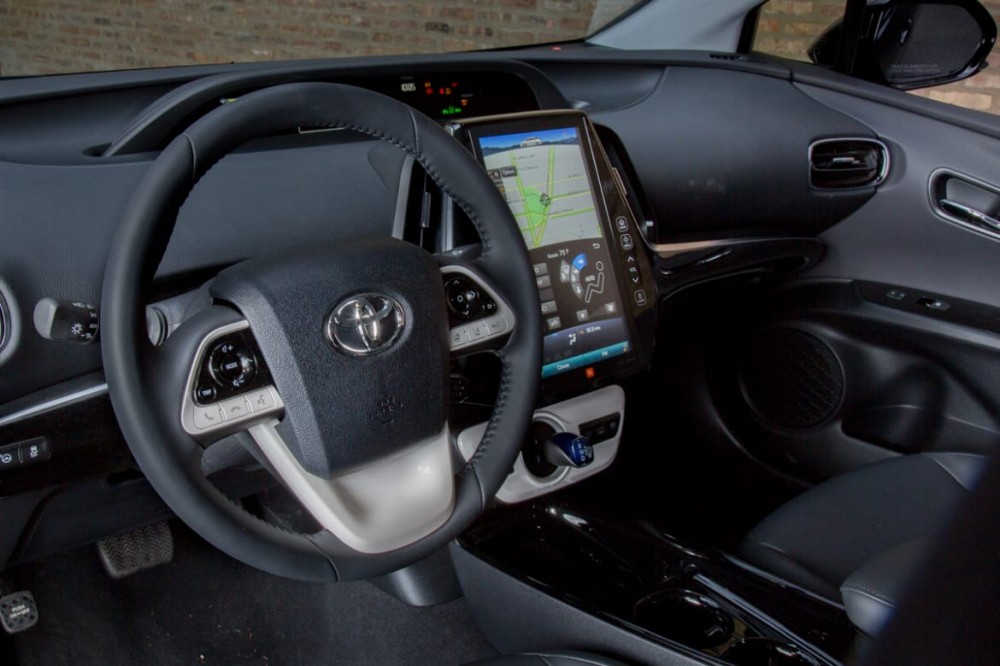
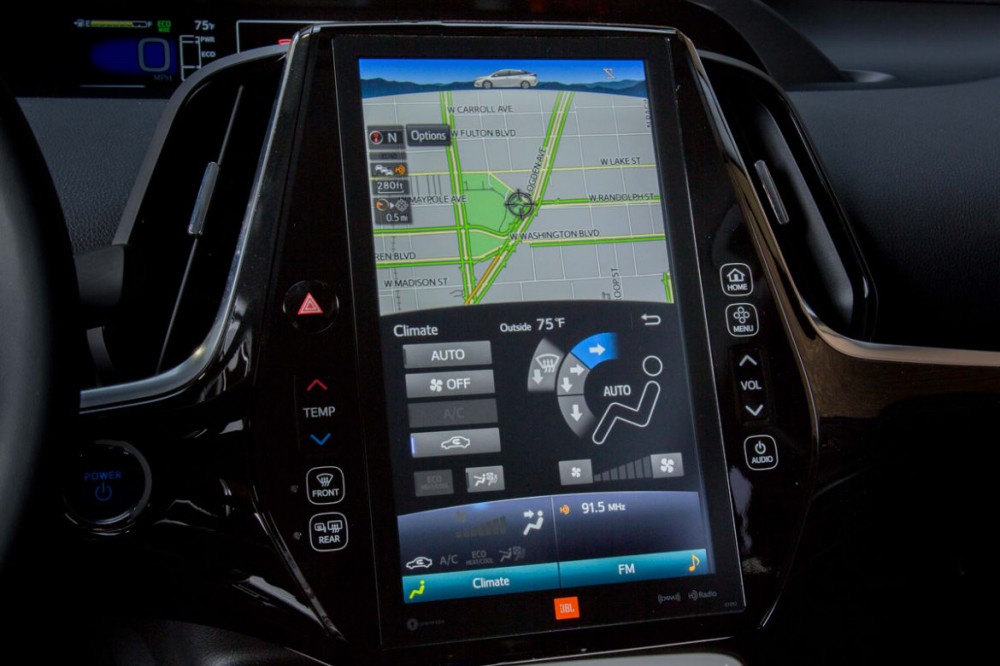
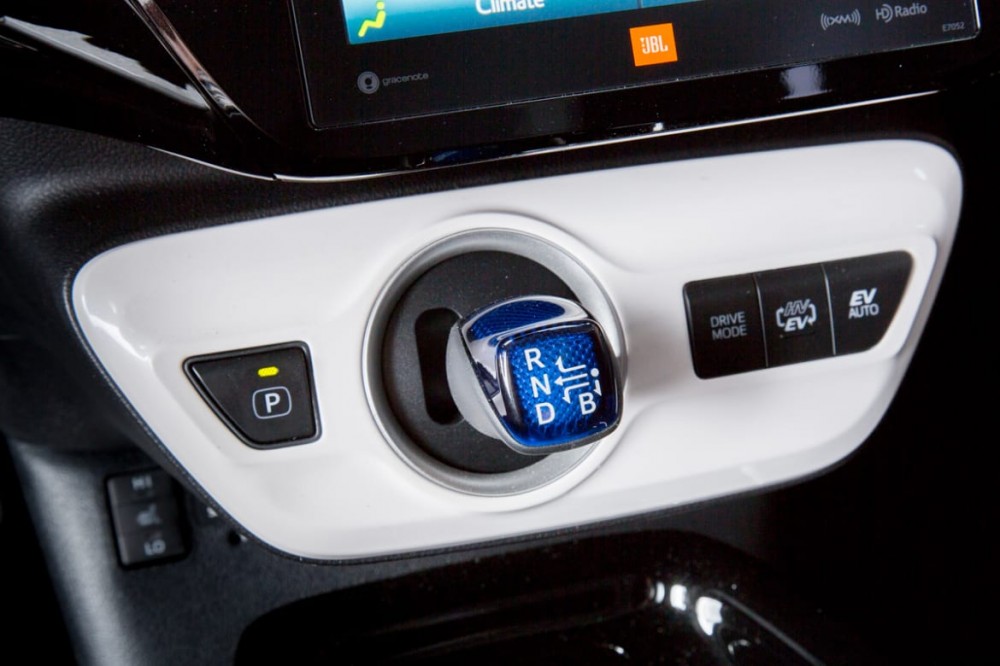
A few negatives stand out, however. First, I'd prefer volume and tuning knobs to the touch-sensitive buttons and panels surrounding the screen. Second, the screen attracts dust, affecting visibility in sunlight. Also disappointing is that the standard backup camera's image takes up just a tiny third of the giant screen. Lastly, as high-tech as it looks and feels, the system is behind the times when it comes to smartphone connectivity: Android Auto and Apple CarPlay are not available. Toyota's less helpful Entune infotainment system is the only smartphone interface.
What the Prius Prime does have is loads of safety features. The Toyota Safety Sense P package is standard and includes forward collision warning with pedestrian detection and automatic emergency braking, lane departure warning with steering assist, automatic high beams and an adaptive cruise control system that works all the way down to a stop. An optional intelligent parking system will steer the Prius Prime into a parallel parking space or back it into a perpendicular one.
Low-Tech Problems
The Prime only has seating for four instead of the regular Prius' five; its plug-in competitors also have five seats. Instead of a center seat in the back, there's an armrest with cupholders and a large storage box. The backseat is also a bit odd, as the large battery pack sits under the seats, raising them up a bit, and the seats themselves are bucketlike and confining.
Behind the seat, the storage area looks large but isn't without its quirks. The hatch provides 19.8 cubic feet of cargo space, which can be expanded by folding down the 60/40-split backseat. That number is lower than the regular Prius' 24.6 cubic feet, again due to the larger battery. The battery's placement also raises the cargo floor above the bottom of the liftgate opening, which makes loading packages awkward.
One other low-tech disappointment is a shortage of USB ports; there's only one in the cabin.
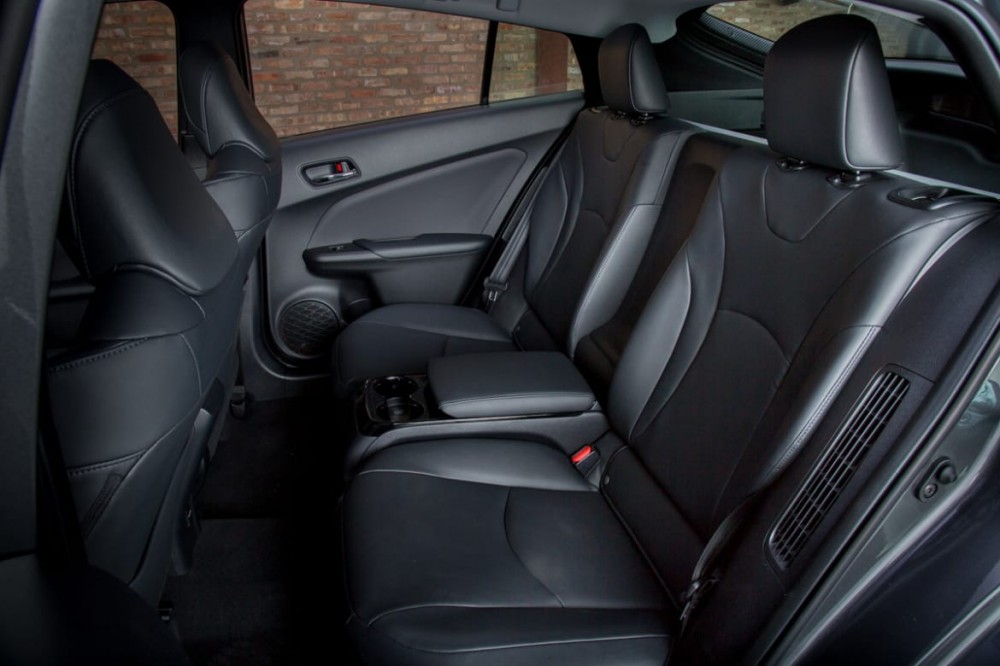

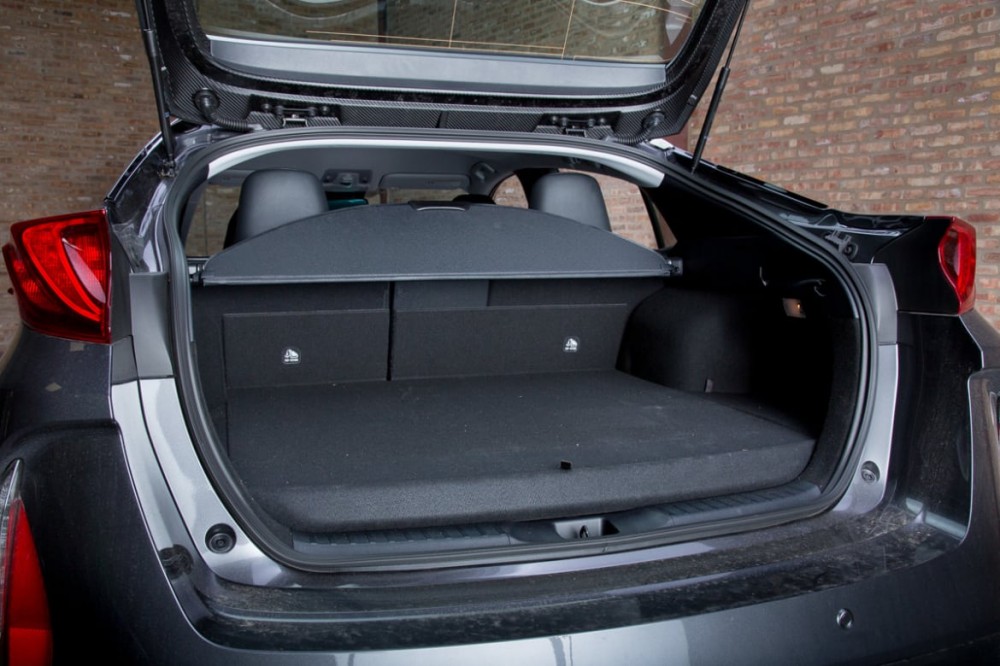
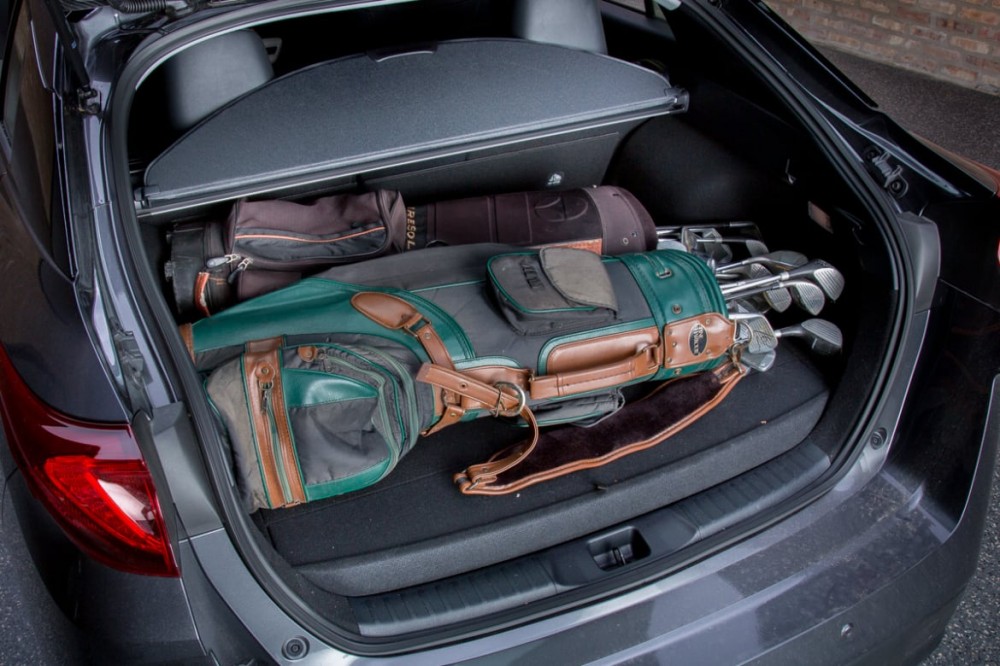
Dollars and Sense
With fuel prices so low, you need a reason other than saving gas dollars to make a case for a plug-in car, as the price premium over a conventional one can be steep. The Prius Prime starts at $27,985 including destination — about $3,500 more than the regular Prius. Among other plug-ins, however, the Prime's price is competitive: It matches the Ford C-Max Energi and is several thousand less than a Chevy Volt or Kia Optima. Similar to the Energi and Optima, it qualifies for a federal tax credit of about $4,500. The Volt's maximum credit is higher thanks to a longer EV range.
If I felt moved by the green-car spirit, the Prime would be a prime contender, but I'd also take a close look at ditching the hybrids and going all-in with a Chevrolet Bolt EV. It's a bit more expensive, but it offers 200-plus miles of electric range — no gas engine. If you're trying to kick the gas habit, there's nothing like going cold turkey.








